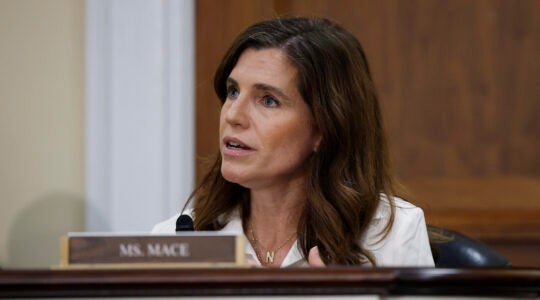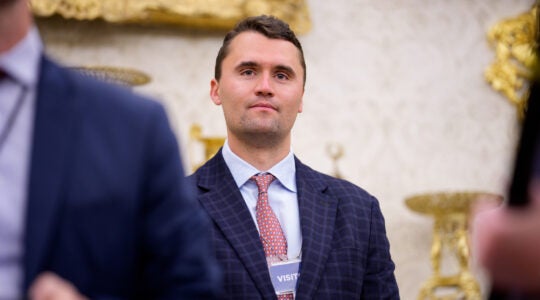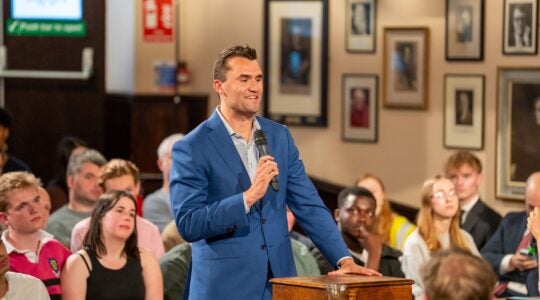This installment of the 28days28ideas comes from Jewcy.com, but is appearing today on the Fundermentalist because of technical difficulties. When Jewcy is back up and running, we’ll put the post back where it belongs.
As I read through the collection of ideas — big and small, new and not-so-new — that make up this project, I’m struck by how many of them are attempted game changers.
 Even the ideas that aren’t big, huge, transformative are still presented with the scent of hope that somehow they will revolutionize Jewish life. We’ve proposed models to reinvent Jewish media, Jewish outreach, Jewish education, and pretty much any thing else Jewish. We’ve proposed — as Patrick Aleph did with idea #2 — to tear down the old and start anew. We’ve proposed — as Ami Eden did with idea #1 — to pool our collective resources in a broad new initiative, and we’ve proposed — as Ari Wallach did with idea #6 — to update old behaviors in tech-assisted new ways.
Even the ideas that aren’t big, huge, transformative are still presented with the scent of hope that somehow they will revolutionize Jewish life. We’ve proposed models to reinvent Jewish media, Jewish outreach, Jewish education, and pretty much any thing else Jewish. We’ve proposed — as Patrick Aleph did with idea #2 — to tear down the old and start anew. We’ve proposed — as Ami Eden did with idea #1 — to pool our collective resources in a broad new initiative, and we’ve proposed — as Ari Wallach did with idea #6 — to update old behaviors in tech-assisted new ways.
Most of these ideas are sexy. They’re bold and visible, impacting mostly on the front-end of Jewish life. They’re just the kinds of ideas that can seduce philanthropists, score seed money, and yield yet another Jewish venture. Few of them address the underlying weaknesses of or seek to reinforce the existing Jewish structures, because most of them are offered up on the premise that existing Jewish structures are inherently flawed.
Yet from everything I’ve seen, in the new Jewish ventures and the established Jewish institutions, there is more that can be done within the system than outside of it. Day after day, as I read Daniel Sieradski’s precursor to this project, I kept having the same thought, “This would be a wonderful project for the synagogue I work for to undertake.” The irony is that so many of his ideas are born from the Jewish DIY movement and so many of them are geared to building a Jewish life outside the synagogue.
Why this false dichotomy?
To be fair, I’m painting with a broad brush. I know Daniel, know that he’d be thrilled to see a synagogue commit sufficient resources over a sustained period to see these ideas to fruition. Almost all of the contributors to this project are trying to work within the existing system, even if only out of practical necessity.
Yet there remains this implacable notion that institutional Judaism is a staid place where only the biggest checkbooks get any real say, where the inertia of the old ways and sociopolitical orthodoxies overwhelms any real innovation. It is true that big funders can have an outsized influence, and that organizations sometimes outgrow their mission. Old methods are sometimes too slow to evolve.
But that’s hardly the entire picture. Institutional Judaism is also a place where resources are available, funders are willing to bankroll merited ideas, and practically everyone is ready to jump on any idea that works.
And it should be said, there are lots of ideas that work, including many listed here. I have my job as director of communications at The Temple in Atlanta because of a commitment to exploring those ideas, and I’m lucky to see young families and young leaders pour into the community every day.
I’m less interested in changing the game than I am in playing it at the highest level of competence. The question, for me, is what are the weaknesses? What are the structural points that need reinforcing? How can I build a sustainable game plan for the institutions that will outlive me and my involvement?
So here’s my big idea: Stop having big ideas. Instead let’s all get together and do what Ami Eden and Ari Wallach suggested. Let’s pool our resources and build the strongest technical back-end we can for the organized Jewish world.
Time and again I’m struck by how under-resourced the back-end is, even at large Jewish institutions. Our user databases are static and full of holes in the data, making it near impossible to target our outreach and communications. So we rely on an outdated broadcast model and wonder why we have a hard time reaching people. That’s just one example.
In Idea #8, Rebecca Guber proposed a residency program for Jewish artists. What if Jewish philanthropists came together to endow a communications and technology residency program, placing Jewish communications and technology professionals at synagogues across the country? (I keep focusing on synagogues, because I firmly believe they’re the one place where all Jews can come together regardless of their background, politics, or bank account.)
I guarantee you there are sexier ideas out there. This isn’t always fun work. In fact, it’s often a dreary slog. Funders will likely get more immediate bang for their buck elsewhere, but in the long run they’ll get more bullets for their guns by investing in the back-end.
(Bradford R. Pilcher is the director of communications at The Temple in Atlanta. The synagogue, founded in 1867, was listed by Newsweek magazine as one of America’s 25 most vibrant congregations. Pilcher’s work has included stints at Jewsweek.com, American Jewish Life magazine, and Jewish Funds for Justice. Visit The Fundermentalist to read "Idea #8: jewish Artists Residency" and stay tuned to ejewishphilanthropy for Idea #10. You can also visit 28days28ideas.com for the full list of ideas as they progress.
JTA has documented Jewish history in real-time for over a century. Keep our journalism strong by joining us in supporting independent, award-winning reporting.





